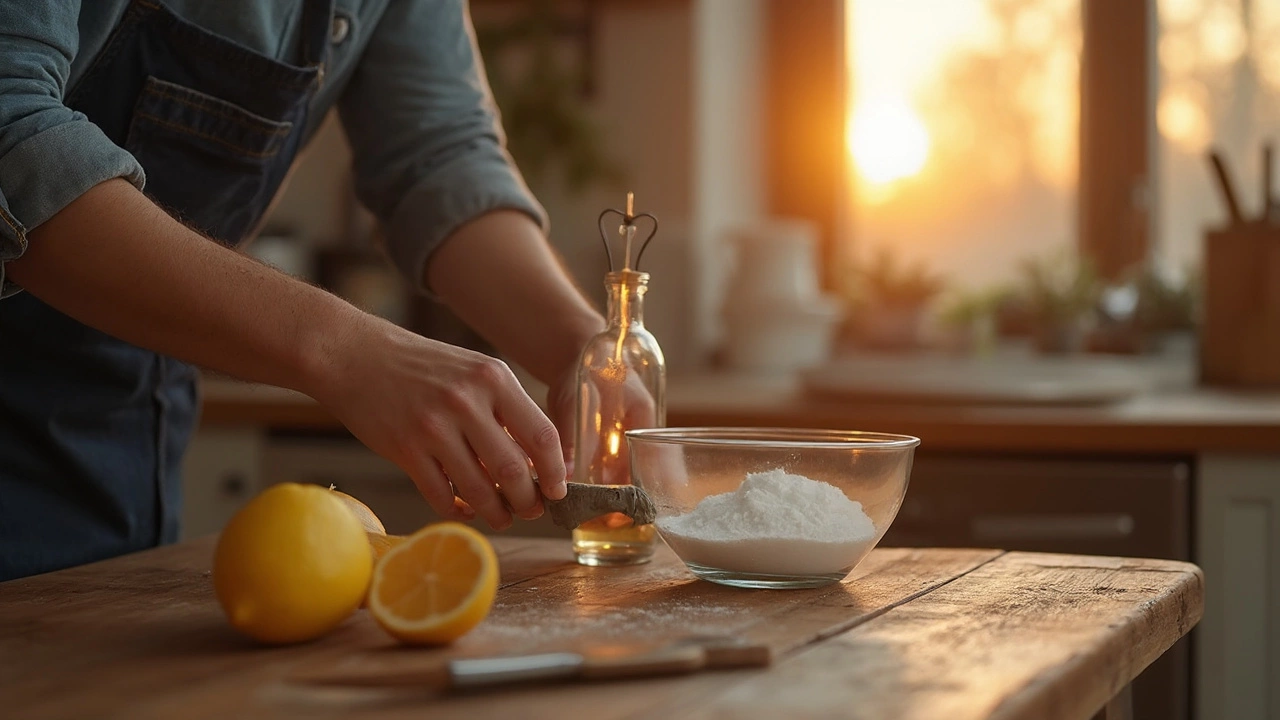DIY Oven Cleaner – Simple Homemade Recipes that Really Work
Got a greasy oven and don’t want to spend a fortune on commercial products? You can clean most ovens with things you already have in the kitchen. Baking soda, vinegar, and a bit of elbow‑grease are enough to melt baked‑on grime, erase brown stains on the glass door, and leave no nasty chemical residue.
Why Make Your Own Oven Cleaner?
Store‑bought cleaners often contain harsh surfactants that can damage the enamel or the glass door over time. A DIY mix stays gentle on surfaces while still breaking down tough grease. It’s also eco‑friendly – no plastic spray cans or strong fumes. Plus, you control the ingredients, so pets and kids stay safe from hidden toxins.
Three Proven DIY Recipes
1. Classic Baking Soda Paste
Mix ½ cup of baking soda with 2‑3 tbsp of warm water until you get a spreadable paste. Apply the paste to the oven interior, avoiding the heating elements. Let it sit for at least 30 minutes – longer if the grime is stubborn. After the wait, use a damp sponge to wipe away the paste; the baked‑on residue should lift off easily. Finish with a quick spray of white vinegar for a fizzing reaction that loosens any remaining bits.
2. Vinegar‑Only Spray
If you need a fast touch‑up, fill a spray bottle with undiluted white vinegar. Spray the oven door glass and any visible spots. Let it sit for 5‑10 minutes, then wipe with a microfiber cloth. Vinegar cuts through light grease without scratching the glass and leaves a streak‑free shine.
3. Baking Soda + Vinegar Power Combo
For the toughest black grease, sprinkle a generous layer of baking soda over the affected area. Then, spray white vinegar on top. The mixture will bubble and foam, breaking down grease at the molecular level. After the fizz stops, scrub gently with a non‑abrasive brush or sponge. Rinse with a damp cloth and repeat if needed. This method works well on both the metal interior and the glass door.
Tip: Always test a small hidden spot first, especially on glass doors, to ensure the surface tolerates the reaction. Avoid using excessive water near electrical components.
Once you’ve cleared the grime, give the oven a final wipe‑down with a clean, damp cloth. Let it air dry for a few minutes before turning it on again. You’ll notice less smoke the next time you bake, and the oven will run more efficiently because the heat isn’t fighting a layer of oily residue.
Need to keep the oven clean longer? Place a sheet of aluminium foil on the bottom rack to catch spills, or run a quick 15‑minute “self‑clean” cycle at a low temperature after each heavy‑use session. Regular light cleaning with the vinegar spray keeps stains from building up, so you won’t have to tackle a full‑blown grease battle every month.
In short, a few pantry staples can replace pricey chemicals and give you a safe, effective oven cleaner. Try one of the recipes above the next time your oven looks dull, and enjoy a fresh‑smelling kitchen without the harsh after‑taste of chemical cleaners.

Best Homemade Oven Cleaner: Easy DIY Methods for a Sparkling Oven
If you’re tired of the chemical stench left behind by store-bought oven cleaners, there’s hope in your kitchen cabinets. This article digs deep into the science and strategy behind the best homemade oven cleaners, showing you exactly what works, why it works, and how to use simple ingredients like baking soda and vinegar for professional-level results. Along the way, you’ll pick up practical tips, bust some myths, and learn tricks that even seasoned home cooks may never have heard. By the end, you’ll know how to make your oven shine without putting your lungs—or your wallet—through the wringer.
Read More